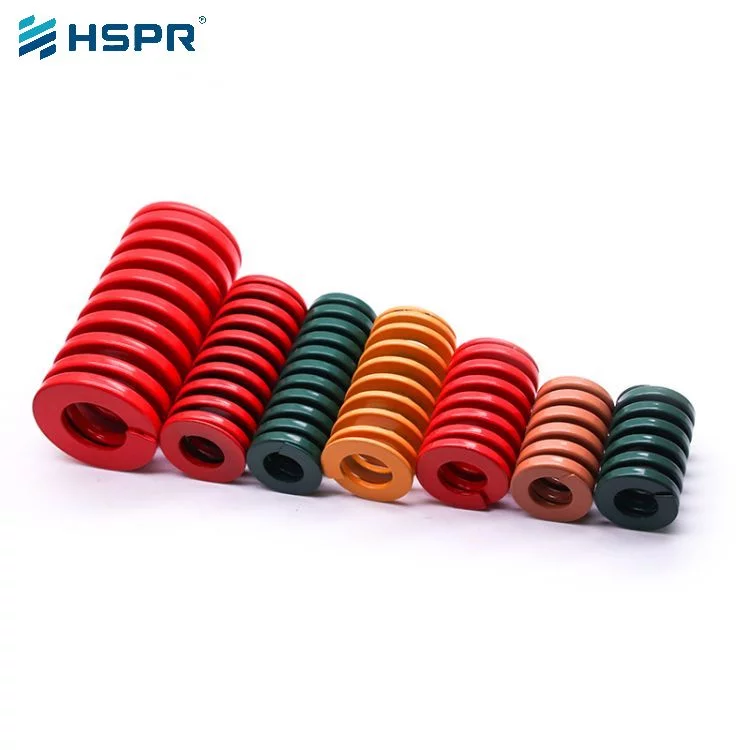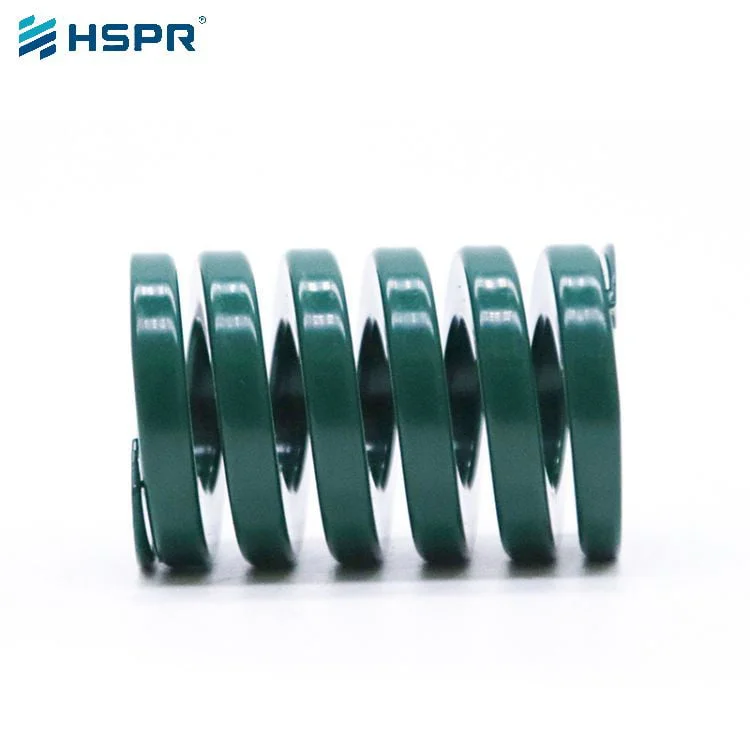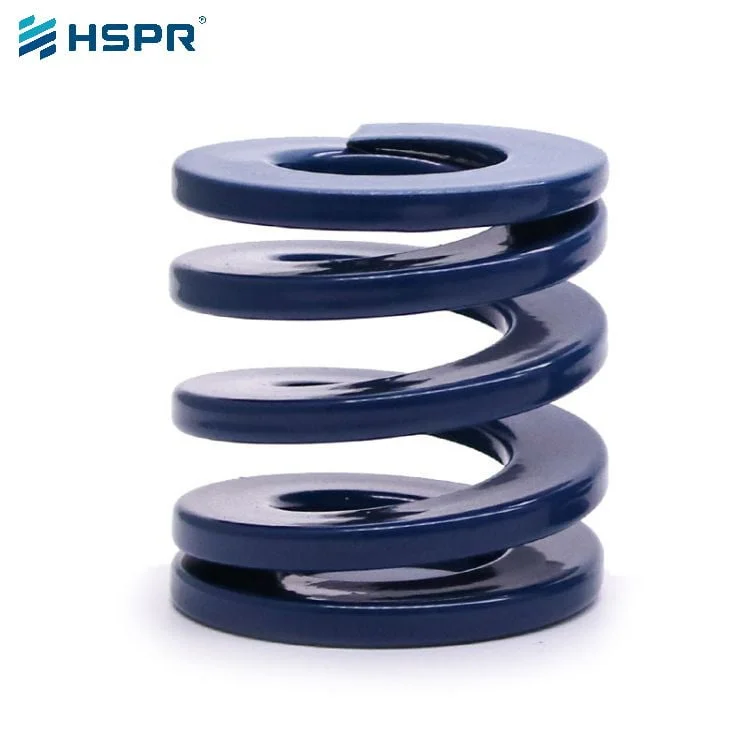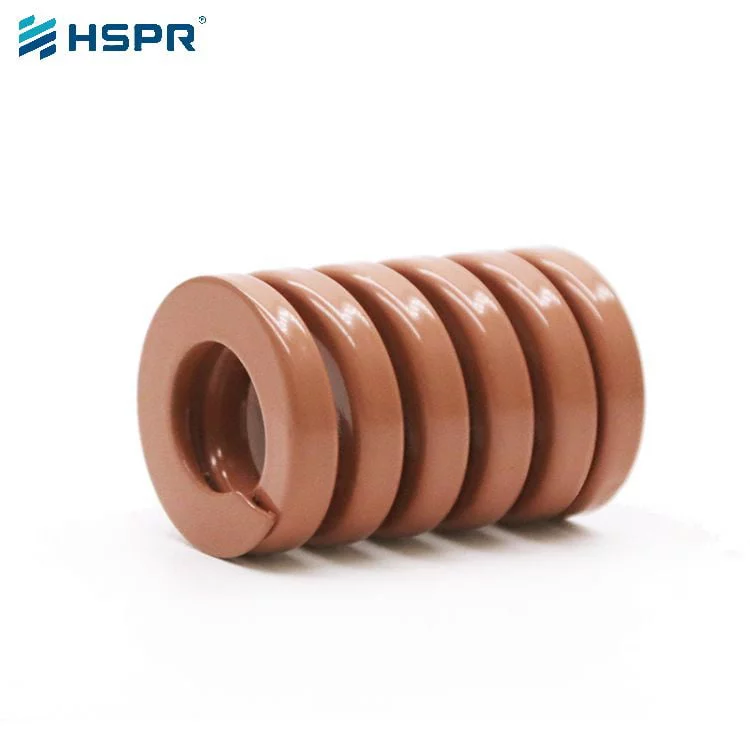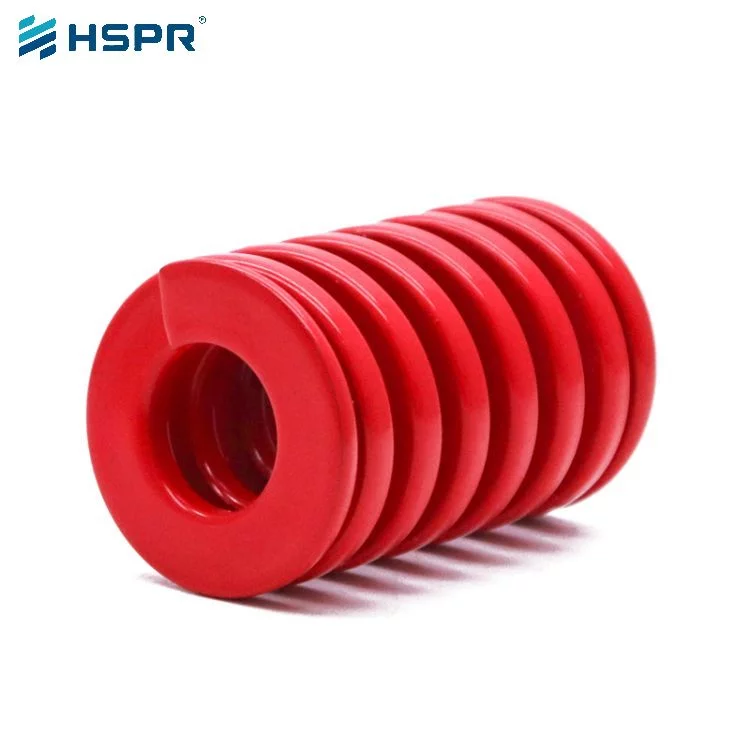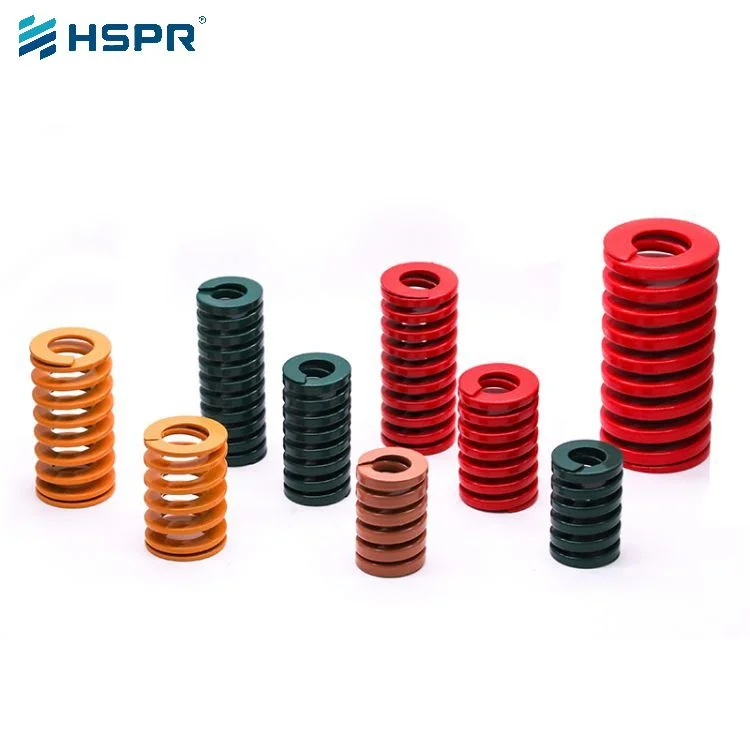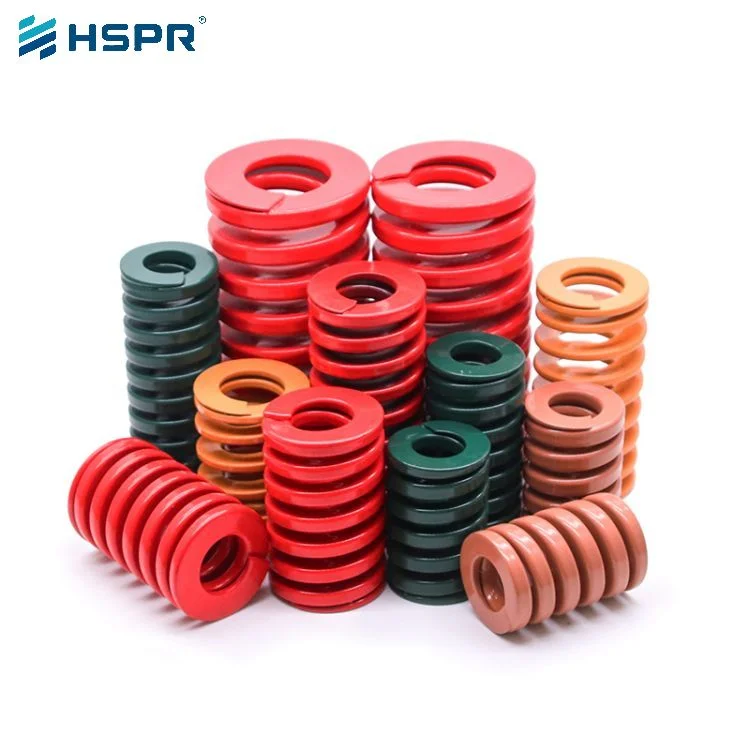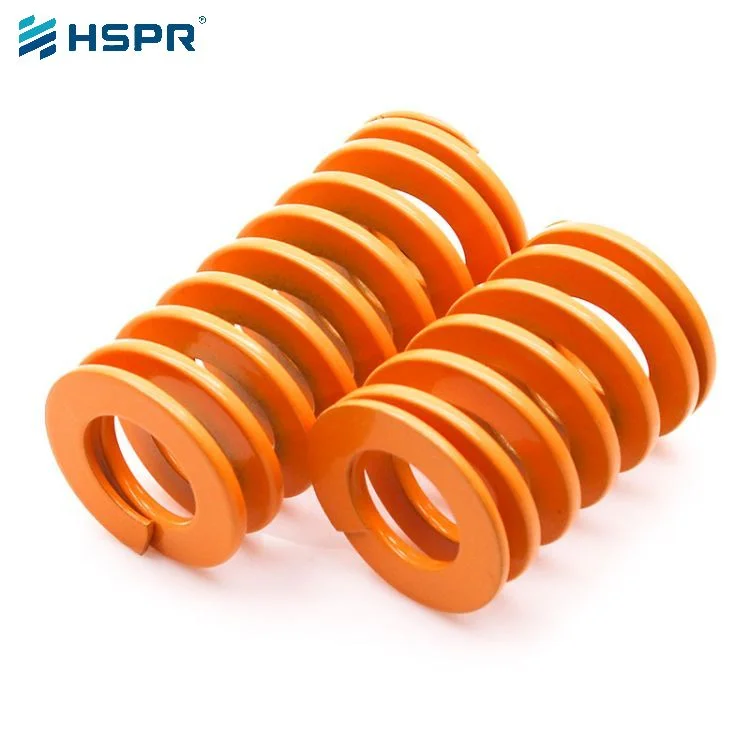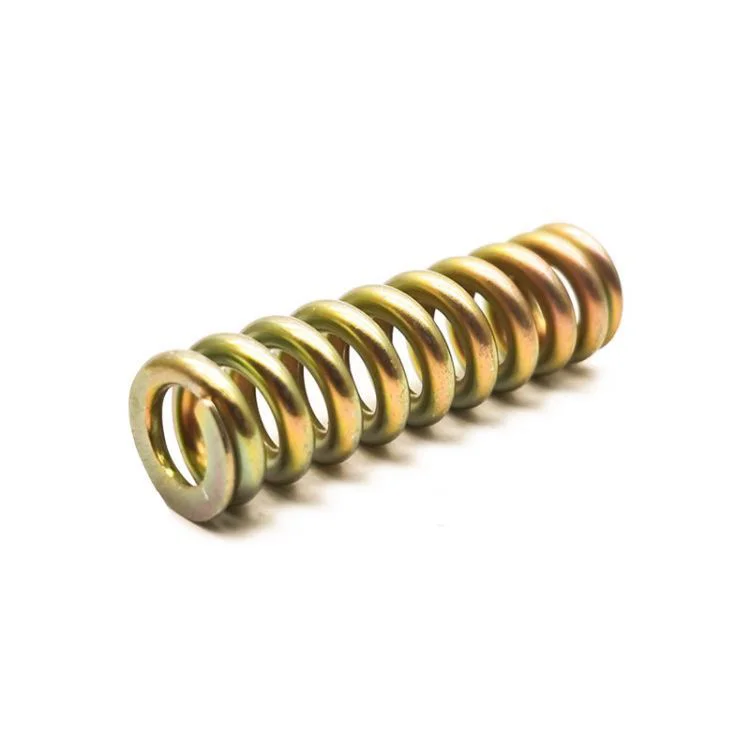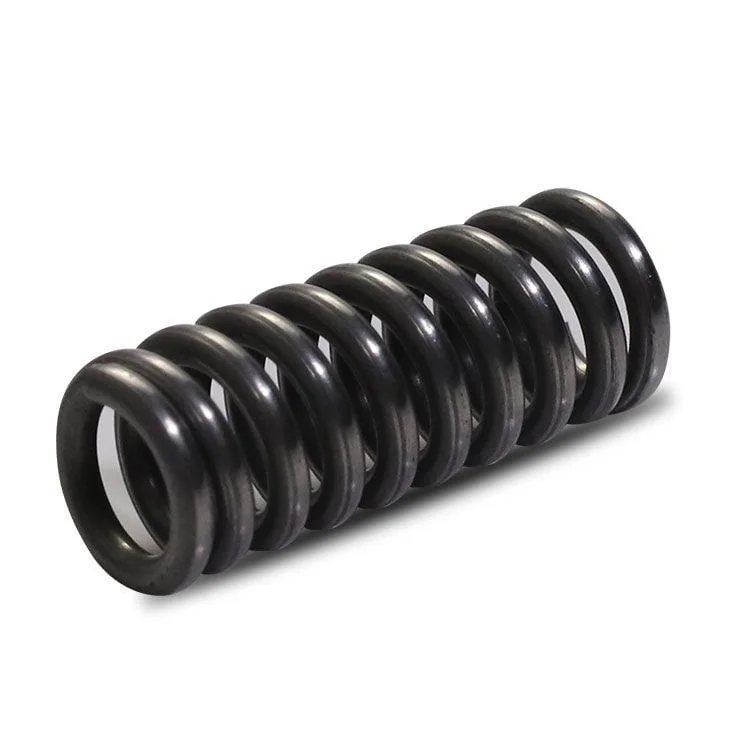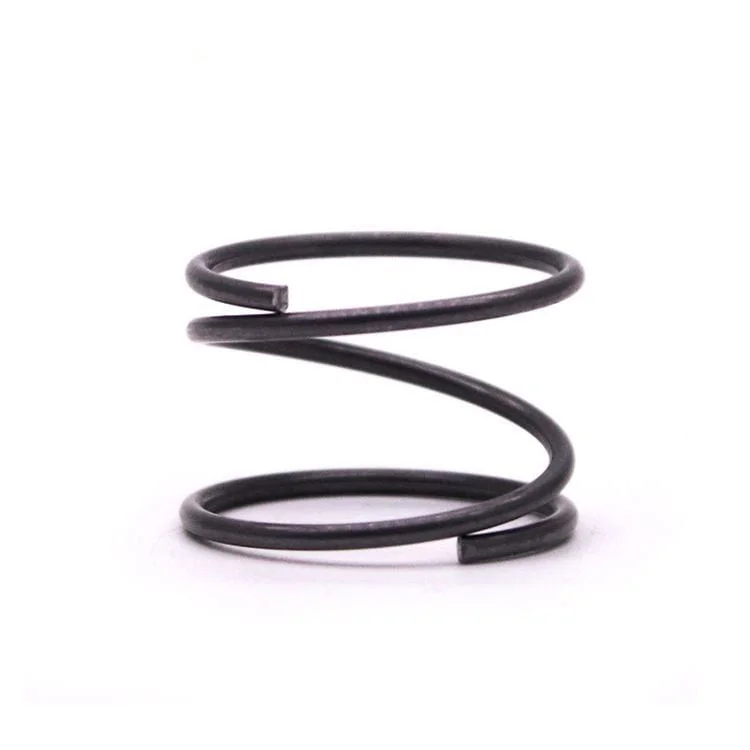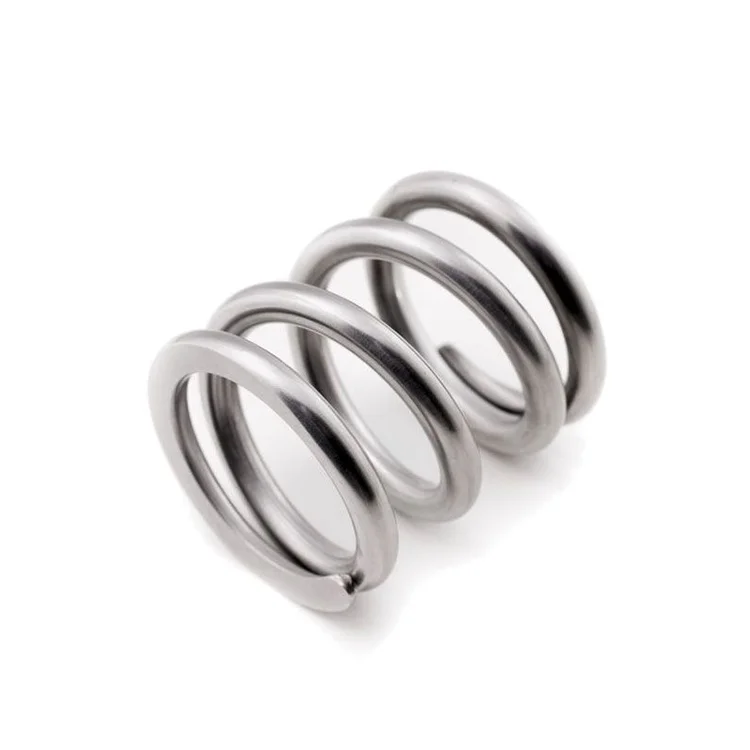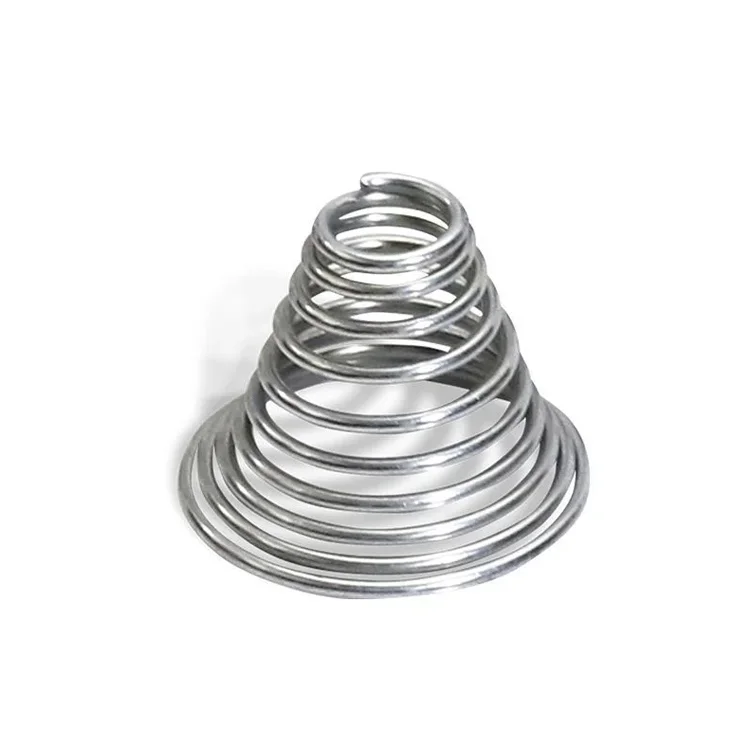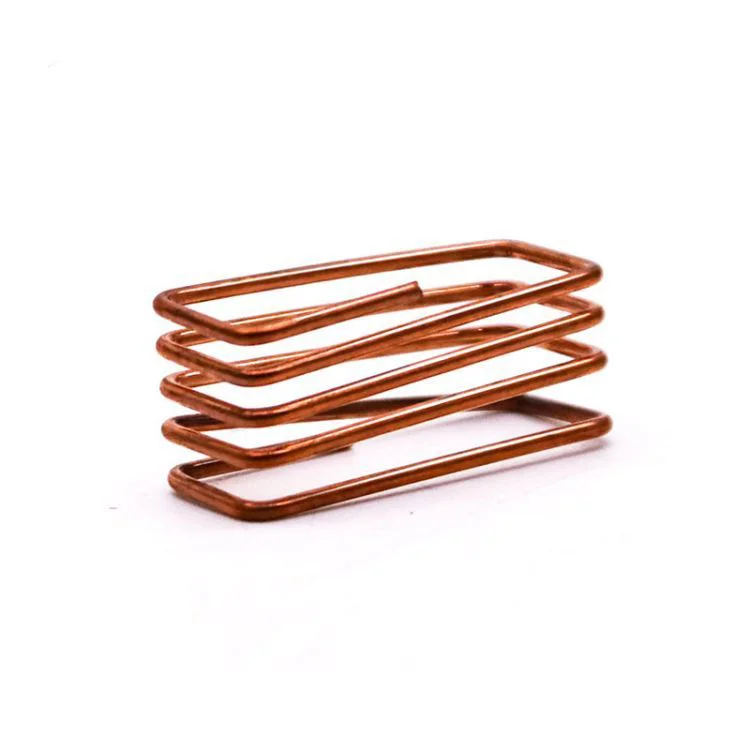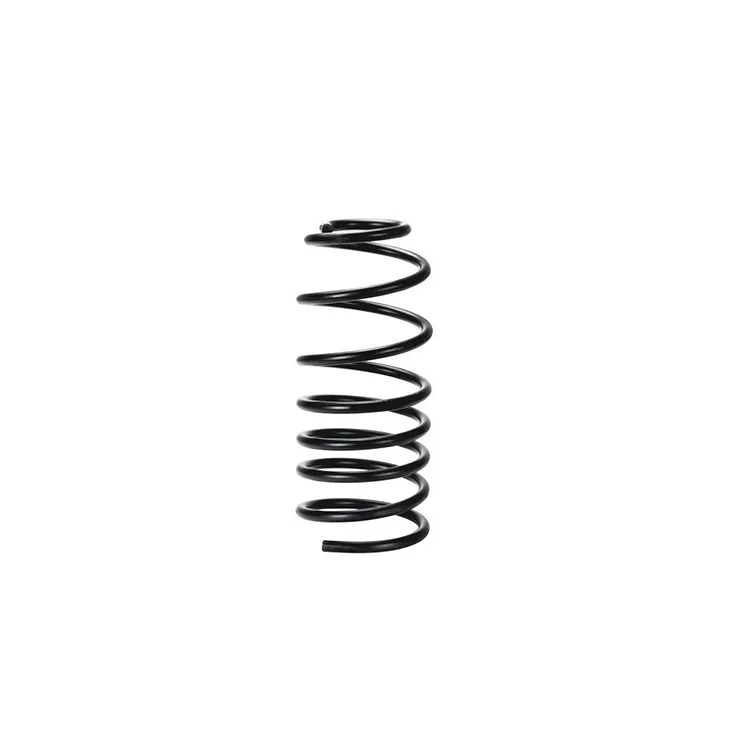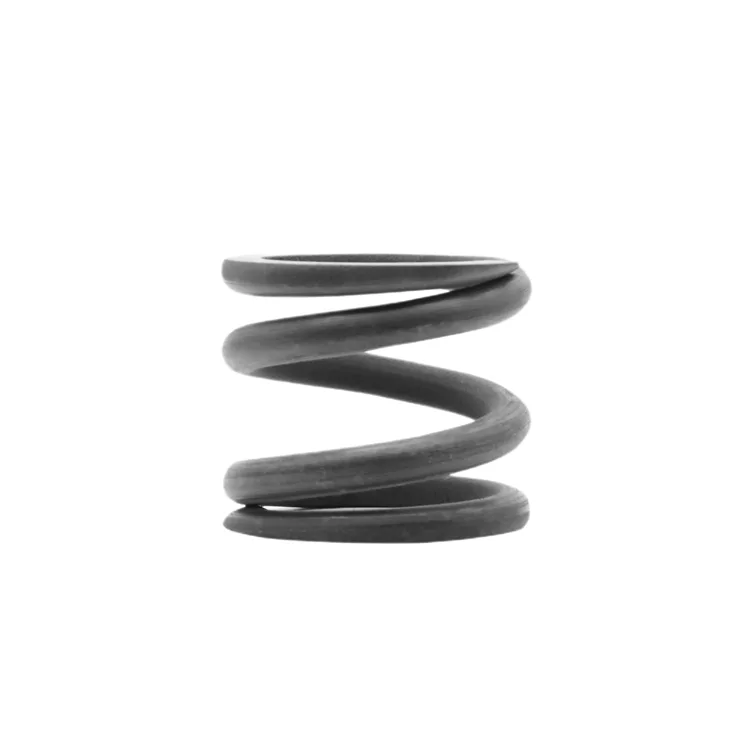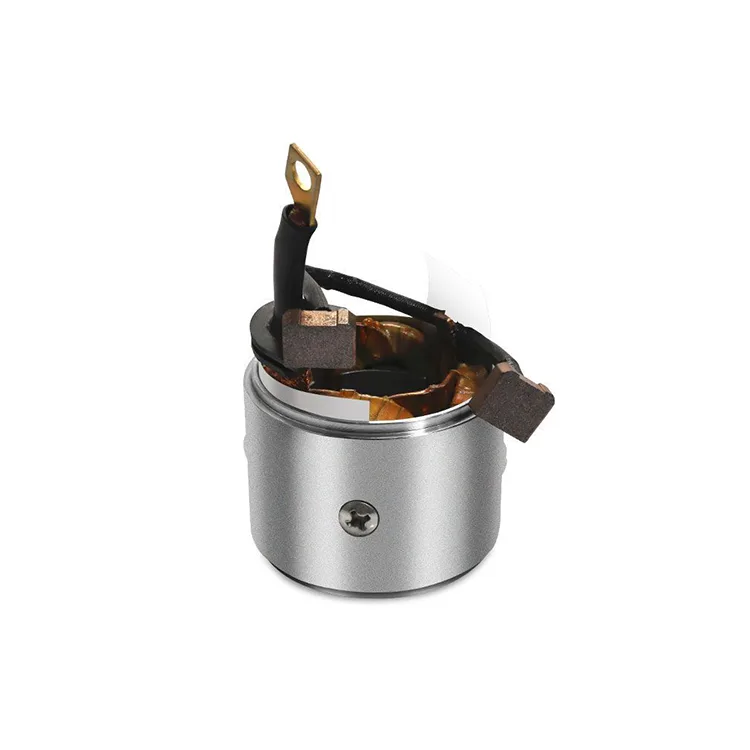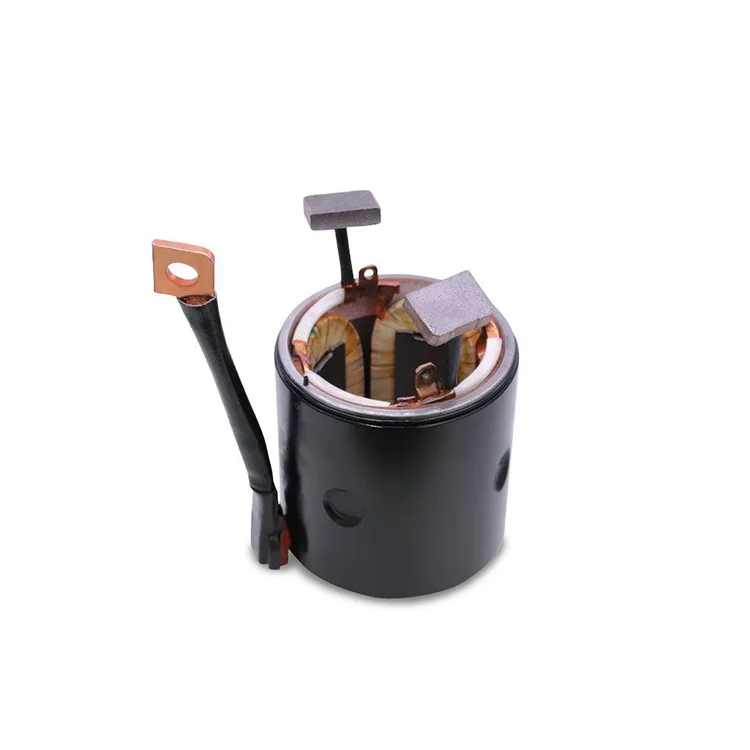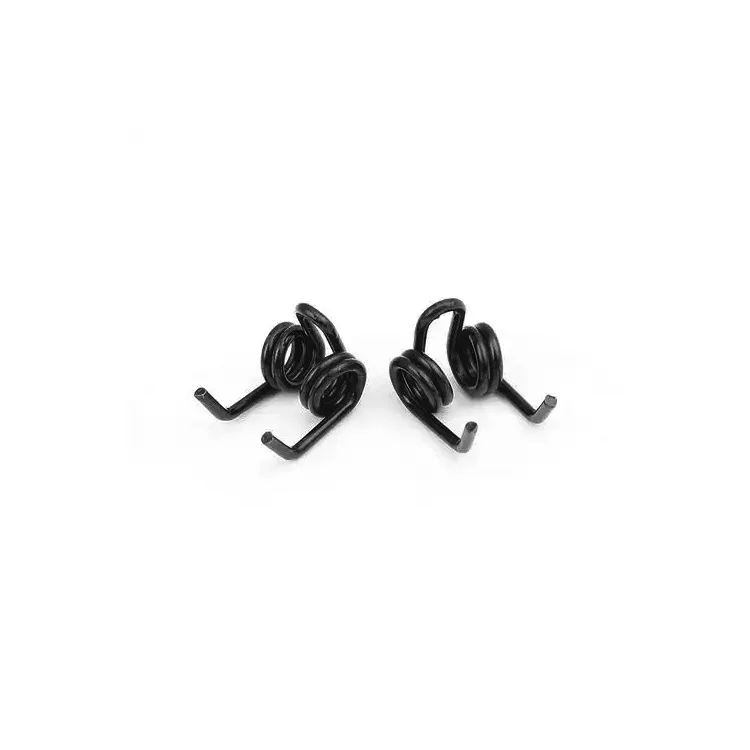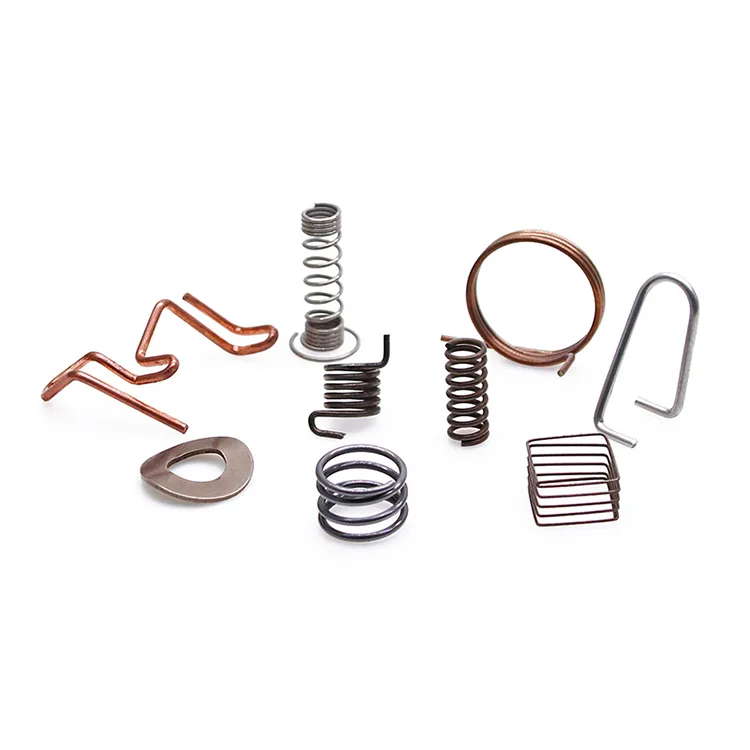Rectangular flat wire compression die spring
Die spring is typically a compression spring that made of square or rectangular cross-section material, compared to round spring wire, it has more mass and therefore will produce a lot of force, and since they’re typically rectangular they can get a lot of force with a small deflection, In applications where space is limited and particularly where solid height is restricted, springs designed from rectangular wire are often used. These springs are commonly referred to as die springs.

Die springs store more energy in a smaller space than equivalent round-wire springs. Even though stress distribution around the rectangular cross section is not as uniform as the round wire section, the energy storage capacity is higher because more material can be incorporated into the allocated space.
| Spring type | Rectangular flat wire compression die spring |
| Application | .Die machinery and stamping .Plastic injection molding .Punch presses .Fabrication processes .Clutches and brakes in theautomotive industry |
| Winding direction | Right hand or left hand |
| Surface treatment | Anti-rust oil, blue color, zinc plating, according to the drawing |
| Material | Chrome Alloy, Chrome Silicon, Carbon wire, stainless steel wire, piano wire or other special requirements |
| Material cross section | Square, rectangular, oval or other special requirements |
| Ends | Open or close |
| Types | Standard US, Metric ISO, Metric JIS or custom |
We can make die springs according to your requirements. Our die springs includes ISO – European Standard, JIS – Japanese Standard, Oval – USA Standard, and other custom die springs.
Why choose us
- All springs have been tested by strong pressure
- Use the latest shot peening technology to increase spring life
- The surface of the spring is strengthened
Other Die spring Display
Small size die spring Video
How to choose a die spring?
When choosing a die spring, the following factors need to be considered:
Material of spring:
Materials with high fatigue strength and tensile strength should be selected. For example, oil-tempered steel spring wire, steel alloys, chrome alloys, chrome silicon, and chrome vanadium. These materials have different characteristics, such as high strength, high hardness, high toughness, high fatigue limit, good wear resistance, not easy to rust, good corrosion resistance, etc., can be selected according to the specific needs of the mold and application scenarios.
Wire shape:
Rectangular wire, Round wire, Oval Wire
Spring size:
The appropriate size should be selected according to the specific installation space and use needs. For example, the outside diameter of the spring, the diameter of the hole, etc., need to be determined according to the actual application.
Load of the spring:
The spring with the corresponding load should be selected according to the specific requirements of the actual application. Too strong or too weak load capacity may cause the spring to not work properly.
Die springs are typically coated or marked with colored vinyl that is color-coded to indicate the working load of the springs.
Spring installation method:
The installation method of the spring should be determined according to the structure of the application scenario. Different mounting methods may have an impact on the performance and service life of the spring.
Price of custom die spring:
Should consider the quality and price of the spring, choose cost-effective products. Under the premise of meeting the needs of the mold, as far as possible to choose a reasonable price, reliable quality of the spring.
In addition, it is also necessary to consider the high elastic limit, high fatigue strength, good heat treatment performance and strict dimensional accuracy of the die spring. These characteristics can ensure that the die spring can withstand greater pressure and impact load in practical applications, and ensure the assembly and use performance of the spring.
